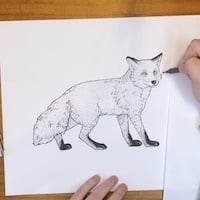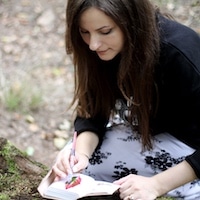
Photo: sunsinger/Depositphotos
Mexico, Guatemala, and Belize share one of the most biodiverse habitats on the planet. Known as the Mayan jungle, this tropical rainforest is home to over 7,000 species, including 200 endangered creatures and a similar number of endemic animals—meaning they can only be found there. In an effort to safeguard this area, the three national governments have created the Great Mayan Jungle Biocultural Corridor, a 14-million-acre (5.7 million hectares) protected area.
“This is one of Earth’s lungs, a living space for thousands of species with an invaluable cultural legacy that we should preserve with our eyes on the future,” said Mexican President Claudia Sheinbaum. Given its size, the corridor will become the second biggest nature reserve in the Americas, only behind the Amazon rainforest. Guatemala will make the largest contribution with 2,673,726 hectares of protected natural areas—about a fifth of its total size—followed by Mexico with 2,426,451 hectares, and Belize with 591,700 hectares.
The actions taken to ensure this region thrives include regenerating soils, restoring degraded forest cover, promoting food self-sufficiency, and above all, improving the well-being of the Indigenous peoples and recognizing their labor as protectors of nature. The agreement will safeguard a priceless heritage while promoting a sustainable development model that generates well-being for communities in the three neighboring countries.
This massive endeavor is not without challenges. Organized crime groups plague the area, as well as illegal loggers and miners. For the zone to be truly protected, the governments vowed to increase security forces and engage residents by offering them alternative paths to make a living. One such initiative is the expansion of Mexico’s “Planting Life” program, in which landowners are given funds to plant and grow certain trees that produce fruit or timber.
The existence of the reservoir also means reconsidering some infrastructure projects that threaten the environment, such as the expansion of Mexico’s Mayan train into Belize. That’s why a council integrated by environmental specialists and Indigenous leaders will advise on what projects could put the already fragile area in danger.
“We are not only protecting an ecosystem, but also honoring the legacy of the civilization that once flourished in these territories,” said Belize Prime Minister John Briceño. “Mexico, Guatemala, and Belize are demonstrating once again that our political borders do not divide us, but rather unite our efforts to preserve one of the last lungs of the planet and the living heritage of the Maya people.”
Great Mayan Jungle Biocultural Corridor: Website
Sources: Mexico, Guatemala, Belize to create tri-national Mayan jungle reserve; How Guatemala, Mexico, and Belize plan to protect 14 million acres of Mayan forest; Biocultural Corridor Gran Selva Maya; En un acuerdo histórico, México, Guatemala y Belice crean el Corredor Biocultural de la Gran Selva Maya, el más grande del mundo en su tipo
Related Articles:
Archeologists Discover Lost Maya City With Pyramids and Plazas in the Middle of the Mexican Jungle
Ancient Maya City Discovered Under Jungle Forests in Mexico After 1,000 Years
Architecture Firm Builds Organically Shaped Offices in the Heart of the Mayan Jungle
Researchers Spent Six Weeks in the Jungle to Capture the First Images of a Bird Long Thought Lost






















































































